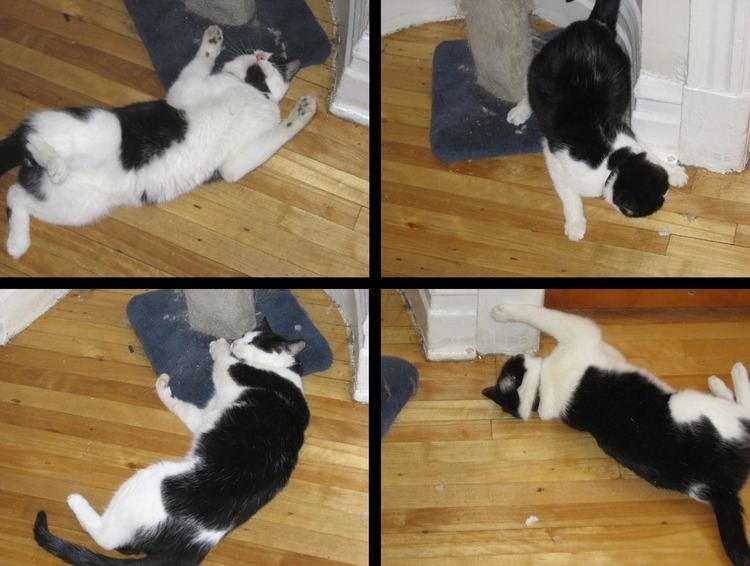 | ||
Cat pheromones are pheromones that are used by cats and other felids for cat communication.
Contents
Feline facial pheromone
Feline facial pheromone is a pheromone used by cats to mark places, objects, and persons as familiar by rubbing their face on surfaces. Several pheromones are currently known to exist as "feline facial pheromones" and are produced from glands located around the mouth, chin, forehead and cheeks.
These are only some of the many pheromones that cats produce. Others are from lower back, tail and paws. For more information see cat communication.
Cat attractants
Cat attractants are odorants that have an effect on cat behavior. A cat presented with a cat attractant may roll in it, paw at it, or chew on the source of the smell. The effect is usually relatively short, lasting for only a few minutes after which the cats have a refractory period during which the response cannot be elicited. After 30 minutes to two hours, susceptible cats gain interest again.
The volatile chemicals that are currently known to cause these behavioral effects in cats are actinidine from Valeriana officinalis, nepetalactone from Nepeta cataria (catnip), dihydronepetalactone, neonepetalactone, isodihydronepetalactone, epinepetalactone, boschnialactone, boschniakine, dihydroactinidiolide, actinidiolide, iridomyrmecin, (−)-mitsugashiwalactone, and onikulactone.
Cat urine odorants
Cat urine, especially that of male cats, contains the putative cat pheromone 3-mercapto-3-methylbutan-1-ol (MMB), a compound that gives cat urine its typical odor. The MMB precursor felinine is synthesized in the urine from 3-methylbutanol-cysteinylglycine (3-MBCG) by the excreted peptidase cauxin. Felinine then slowly degrades into the volatile MMB.
Rats and mice are highly averse to the odor of a cat's urine, but after infection with the parasite Toxoplasma gondii, they are attracted by it, highly increasing the likelihood of being preyed upon and of infecting the cat.
